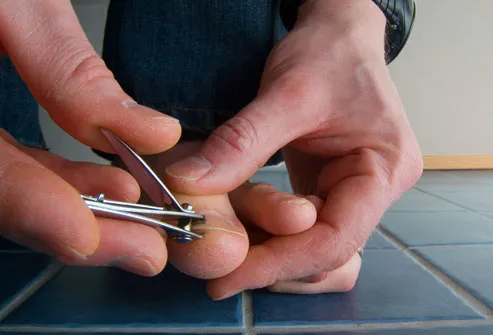
In most cases, an ingrown fingernail is associated with improper nail care. However genetic predisposition cannot be ruled out. Improper cutting of the nail and even the habit of nail biting can lead to this painful condition. Biting nails often leaves the edges uneven, and sometimes hurts the sides of the nail bed. Cutting the nail too close to the bed by the sides also can trigger pain and swelling.
Another common reason for ingrown fingernails is cutting the nails in a curved fashion which causes the sides to be directed into the skin. Similarly sharp nail edges are yet another factor. People who love to grow their nails long should be careful to trim evenly and must take care not to curve the nails. A blunt injury to the nail plate is another causative factor.
An ingrown fingernail presents itself with pain, redness and swelling of the finger. The pain can be severe, making the finger sensitive to the slightest touch too. The inflammation can be a single side specific or even on the bilateral sides of the nail. The initial pain and swelling of the nail bed is then followed by abscess or pus formation.
There are easy forms of treatment that can help you relieve the pain and reduce the infection. Of course, if you are a diabetic, always consult your doctor. To treat an ingrown nail, one of the best strategies is to relieve the inflammation. Soaking the finger in warm water for about 30 minutes helps a lot. Mixing the warm water with Epsom salt or baking soda is very useful. If the nail is hurting and digging into the flesh, you can easily clip off the extra length now, since the soaked nail and the skin around is soft after soaking. This will help relieve the pressure.
An anti-septic application can be applied to the affected nail. For an infected nail, an antibiotic drug along with non steroidal anti-inflammatory drugs (NSAIDS) helps relieve the pain as well as combating the infection. In case of infection it is best to seek help or treatment from a physician to avoid further complications. In a more severe case of ingrown fingernail, surgery for partial or complete nail removal is recommended.
No comments:
Post a Comment